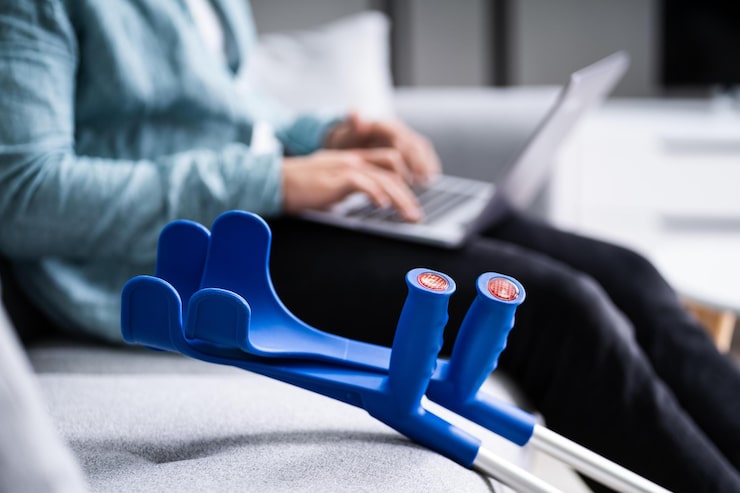Pregnancy is a time of excitement and joy, but it can also bring along physical discomforts as the body undergoes significant changes. As the baby grows, many pregnant women experience aches and pains, especially in areas like the lower back, hips, and legs. These discomforts are normal, but they can interfere with daily activities and quality of life. This is where physiotherapy comes in.
Physiotherapy offers safe, effective ways to manage pain and discomfort during pregnancy. It focuses on improving posture, mobility, and overall well-being without medication, making it an ideal choice for expectant mothers. In this guide, we’ll explore how physiotherapy can help pregnant women and discuss safe techniques for relieving common pregnancy pains.
Need physiotherapy services in Scarborough? Contact us
Why Physiotherapy is Important During Pregnancy
During pregnancy, the body changes in ways that can create strain on muscles, ligaments, and joints. Hormones like relaxin cause ligaments to loosen to prepare the body for childbirth, which can lead to instability and pain, particularly in the pelvic region. Additionally, weight gain and the growing belly shift the body’s center of gravity, placing more stress on the lower back and legs.
Physiotherapy helps pregnant women manage these changes by:
- Reducing pain in areas such as the lower back, hips, and pelvis.
- Improving posture to accommodate the shift in the body’s center of gravity.
- Strengthening muscles, especially the core and pelvic floor, to support the body as it carries more weight.
- Enhancing flexibility and mobility, making it easier to move and reducing the risk of injury.
- Preparing the body for labor, ensuring that muscles and joints are in optimal condition for childbirth.
✔️ Read related article: How Long Does It Take for Physiotherapy to Show Results?
Common Pregnancy Pains That Physiotherapy Can Help With
Pregnancy can bring various physical discomforts, and many of these can be effectively managed through physiotherapy. Below are some of the most common pains that pregnant women experience and how physiotherapy can help alleviate them.
1. Lower Back Pain
Lower back pain is one of the most common complaints among pregnant women. As the belly grows, the spine is pulled forward, causing the lower back muscles to work harder to support the extra weight. This often leads to discomfort or pain.
- Safe Physiotherapy Techniques:
- Pelvic Tilts: This exercise helps strengthen the core and lower back muscles, providing relief from tension. To do this, stand or sit on a stability ball, tilt your pelvis forward and backward gently, and repeat.
- Cat-Cow Stretch: On your hands and knees, alternate between arching your back (cat position) and lowering your belly (cow position). This stretch helps release tension in the lower back and improves mobility.
2. Pelvic Girdle Pain (PGP)
Pelvic girdle pain (PGP) affects the joints and ligaments in the pelvic area, causing discomfort when standing, walking, or sitting. This pain is often due to the loosening of ligaments around the pelvis in preparation for childbirth.
- Safe Physiotherapy Techniques:
- Stability Ball Movements: Sitting on a stability ball and gently moving your hips in circular motions can help reduce pelvic pressure and stabilize the muscles around the pelvis.
- Hip Bridges: Lie on your back with knees bent, feet flat on the ground, and lift your hips slowly. This strengthens the muscles around the pelvis and helps reduce pain.
3. Sciatica
Sciatica occurs when the growing uterus presses on the sciatic nerve, causing sharp pain that radiates down the legs from the lower back or buttocks. This pain can be particularly uncomfortable and affect mobility.
- Safe Physiotherapy Techniques:
- Piriformis Stretch: Sit on the edge of a chair, cross one leg over the other, and lean forward slightly. This helps relieve pressure on the sciatic nerve and reduces pain.
- Gentle Walking: Taking short, slow walks can help relieve sciatic pain by loosening the muscles and improving circulation. Be sure to avoid overexertion.
4. Hip Pain
As the pregnancy progresses, the hips may become sore due to the increased weight and the loosening of joints. Hip pain is common, especially in the later stages of pregnancy.
- Safe Physiotherapy Techniques:
- Side-Lying Leg Lifts: Lie on your side and slowly lift your top leg, keeping your foot flexed. This strengthens the hip muscles, providing more stability and reducing pain.
- Foam Rolling: Using a foam roller on the hips and glutes helps reduce tightness and improve flexibility, relieving pain.
5. Round Ligament Pain
Round ligament pain is a sharp pain in the lower belly or groin that occurs as the uterus expands. This is particularly common during the second trimester as the ligaments stretch to support the growing baby.
- Safe Physiotherapy Techniques:
- Gentle Core Exercises: Engaging in gentle core exercises, such as seated pelvic tilts, helps support the uterus and reduce round ligament pain.
- Prenatal Yoga Poses: Certain prenatal yoga poses, like the child’s pose, can help stretch the ligaments and relieve tension in the lower belly.
✔️ Read related article: How Can Physiotherapy Help with Post-Surgical Recovery?
How Physiotherapy Prepares Your Body for Labor
In addition to relieving pain, physiotherapy can play a crucial role in preparing the body for labor. Labor requires strength, flexibility, and endurance, particularly in the pelvic region. Physiotherapy can:
- Strengthen the pelvic floor muscles, which support the bladder, bowel, and uterus and play a vital role during delivery.
- Improve breathing techniques, which can help during labor contractions and promote relaxation.
- Increase stamina and endurance, which can make labor and delivery more manageable.
Physiotherapists can guide pregnant women through exercises and stretches that not only help with pain but also prepare the body for a smoother delivery.
When to Start Physiotherapy During Pregnancy
Physiotherapy can be started at any point during pregnancy, depending on when you begin to experience discomfort. Many women begin physiotherapy in the second trimester when pains become more noticeable, but it’s also beneficial during the third trimester as labor approaches.
It’s important to consult with your healthcare provider before starting physiotherapy, especially if you have any pregnancy complications. A physiotherapist who specializes in prenatal care will be able to create a tailored plan that ensures the exercises are safe and effective for you and your baby.
Sum Up
Pregnancy can be physically challenging, but physiotherapy offers a safe and effective way to manage common pains such as lower back pain, pelvic girdle pain, sciatica, and more. With the help of a qualified physiotherapist, pregnant women can find relief from discomfort, improve mobility, and prepare their bodies for a healthy labor. By incorporating simple techniques like pelvic tilts, stretches, and targeted exercises, physiotherapy empowers expectant mothers to stay active, comfortable, and ready for the journey ahead.
If you’re experiencing pain or discomfort during your pregnancy, consider talking to your healthcare provider about how physiotherapy can help support your well-being throughout this important time.










